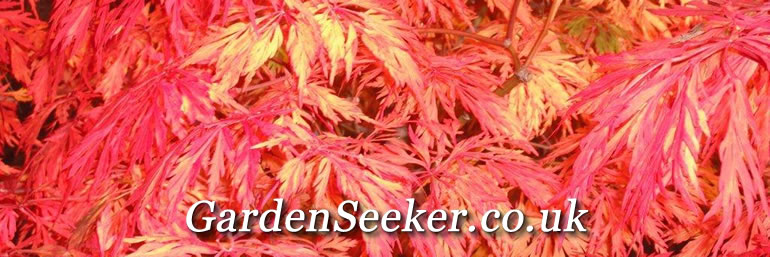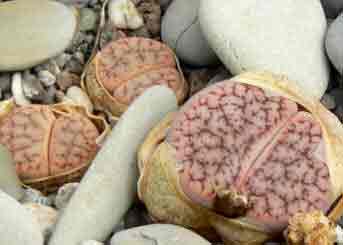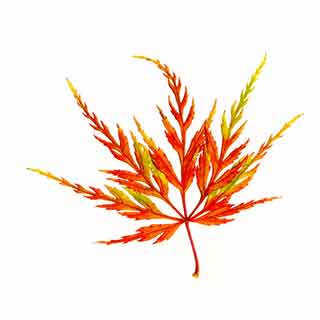

If you are lucky enough to take long vacations in the summer months, then Lithops could be a useful plant for you to grow indoors. It is one of those rare plants where, the least you do, the better it will fare.
So here goes on how to fill a page about plants which requite little attention! You will need a bit of information to answer the questions that are are invariably asked by visitors.
Lithops are succulents in the truest sense, in that their leaves are fleshy water retentive storage organs, which is just as well, for the Lithops grow naturally in rocky desert areas in South Africa. They are also to be found in pebble screes, where the markings on the leaves blend in well with assorted pebbles - giving rise to their common names of Stone Plants or more commonly 'Living Stones.
 The
Plant: Most unusually formed succulents which resemble split
pebbles. They have no stems in the accepted sense, but a pair of
fleshy leaves attached to a stumpy body. The leaves have
assorted markings and mottled patterns and are tightly knit
together, but separated down into the pebbles where the stump
root/body resides.
The
Plant: Most unusually formed succulents which resemble split
pebbles. They have no stems in the accepted sense, but a pair of
fleshy leaves attached to a stumpy body. The leaves have
assorted markings and mottled patterns and are tightly knit
together, but separated down into the pebbles where the stump
root/body resides.
The Lithops are very slow-growing prostrate succulents which
form clusters of tough, rock-like protrusions, occasionally
producing small white star-like flowers in late summer if you
are lucky. heat light and infrequent water are the r4equirements
for this to happen..
Its needs: How to look after. Lithops enjoys full sun even in
summer, and dry air. Winter temperature should be maintained
above 7 C.
Care: Water sparsely in summer and not at all during winter.
Do
not feed unless plant has been in the same pot for several
years, then a weak feed of cactus fertiliser can be added. In
spring the old ‘leaves’ split open to reveal new ones below,
this is the time to commence watering carefully. Only re-pot if
the Living Stones have really overgrown container.
Good for: More of a specialised interest or as a talking point
rather than as a houseplant. Lithops look best planted alone
with either sand or gravel around the clusters. Some people say
these resemble moon rocks! A no-maintenance plant!
A packet of seeds will normally present you with various 'leaf' colours on the new plants. Seed should be sown in spring in dry-ish compost. No need to saturate.
Alternatively, you may be lucky enough to find some offsets sprouting from the base. These can be carefully cut away and replanted - growing on just as you have with the parents.
If flower buds emerge, keep a watch for aphids. Otherwise the plants are relatively trouble-free - unless you give them too mush attention
Prodding by visitors (adults and children) can cause the plants to loosen in the compost. Carefully re-firm after said visitors have departed!
